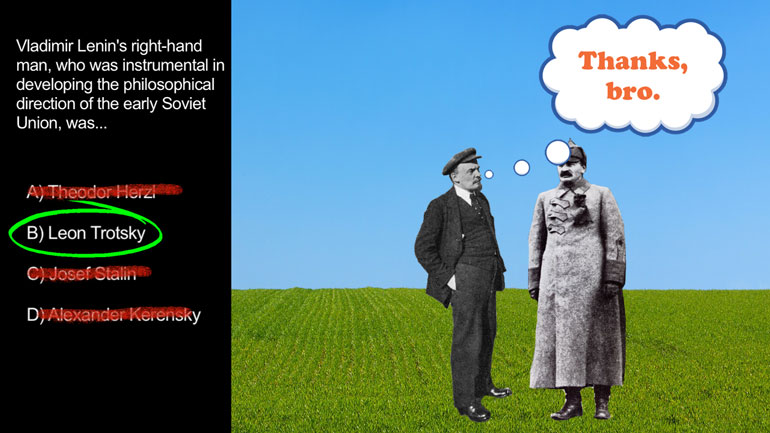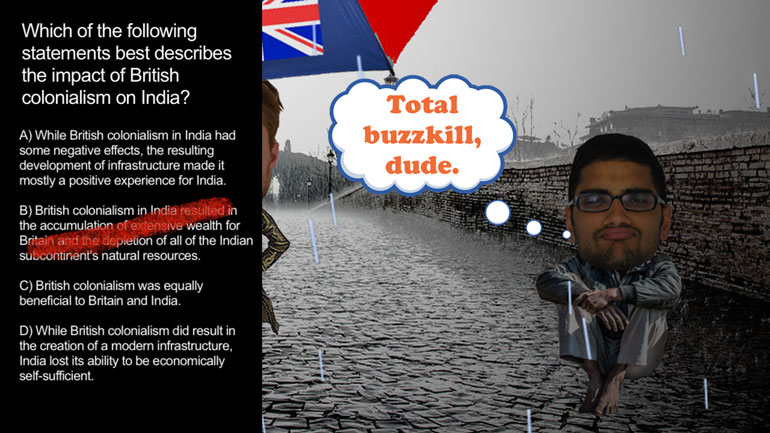ShmoopTube
Where Monty Python meets your 10th grade teacher.
Search Thousands of Shmoop Videos
AP World History Videos 31 videos
AP World History 1.2 Industrialization and Global Integration, c. 1750 to c. 1900. All of the following are innovations of the Industrial Revolutio...
AP World History 2.5 Industrialization and Global Integration, c. 1750 to c.1900. What was the relationship between abolitionist movements and wome...
AP World History 4.3 Industrialization and Global Integration, c. 1750 to c. 1900. What was the immediate cause of the First Sino-Japanese War?
AP World History 3.2 Technological and Environmental Transformations, to c. 600 B.C.E. 19 Views
Share It!
Description:
AP World History 3.2 Technological and Environmental Transformations, to c. 600 B.C.E. Which of the following best describes the social structure of Mesopotamian civilization?
Transcript
- 00:04
And here's your shmoop du jour brought to you by the Sumerian god
- 00:07
Enki who's pretty bummed no one remembers him anymore...Alright which of [Boy points to Enki]
- 00:14
the following best describes the social structure of Mesopotamian civilization
- 00:18
and here are the potential answers.... alright well the civilizations of ancient
- 00:24
Mesopotamia including the Sumerians and Babylonians were meticulous record [Sumer and Babylon on a map]
Full Transcript
- 00:29
keepers they wrote down a lot of stuff which gives us a very good idea of how
- 00:33
their societies were structured anyway let's take a look at each potential
- 00:37
answer did Mesopotamian civilization have a no social hierarchy this would [People stacked in a pyramid formation]
- 00:43
mean everyone was completely equal and no one could order anyone else around
- 00:47
which was the case for example a king was most certainly higher on the social
- 00:51
ladder than his briefs or subjects, so cross off A) by order of the king does C)
- 00:57
have it right and even though their economy was agriculturally based the [Farmer wearing king crown]
- 01:02
agricultural workers were just part of the society and didn't have as much [workers picking berries in a field]
- 01:05
power as say the Queen so the answer is not C).. D) women had few opportunities and
- 01:12
rights in Mesopotamian civilization hmmm wrong-go completely the opposite for
- 01:17
example women in Babylon could own land and own their own businesses we now know [Woman appears from a hut]
- 01:22
that the Mesopotamians were way ahead of their time when it came to women's right
- 01:25
B) mesopotamias social structure was highly stratified well records tell us
- 01:31
their civilization was made of distinct classes each occupying a higher or lower [A wooden ladder]
- 01:35
rung on the social ladder there were nobles, landowners, priests, merchant,
- 01:40
farmers, craftsmen and finally slaves so yeah B) is the one even to this day we [Man pouring out laxative into a cup]
- 01:46
owe much to the Mesopotamian civilization and culture how much well
- 01:50
just imagine how much the patent on the invention of writing would be worth [Man's eyes turn to dollar signs]
- 01:53
today...
Related Videos
Home to the biggest river, the biggest desert, and some of the biggest land animals in the world, Africa is so much more than what most media would...
Didn't get enough of the French Revolution the first time around? We've gotcha covered. Check out our second French Revolution video, preferably wi...
Famine is one of the biggest problems in Africa. Find out why it's such a complex problem, and what's being done to combat it.































